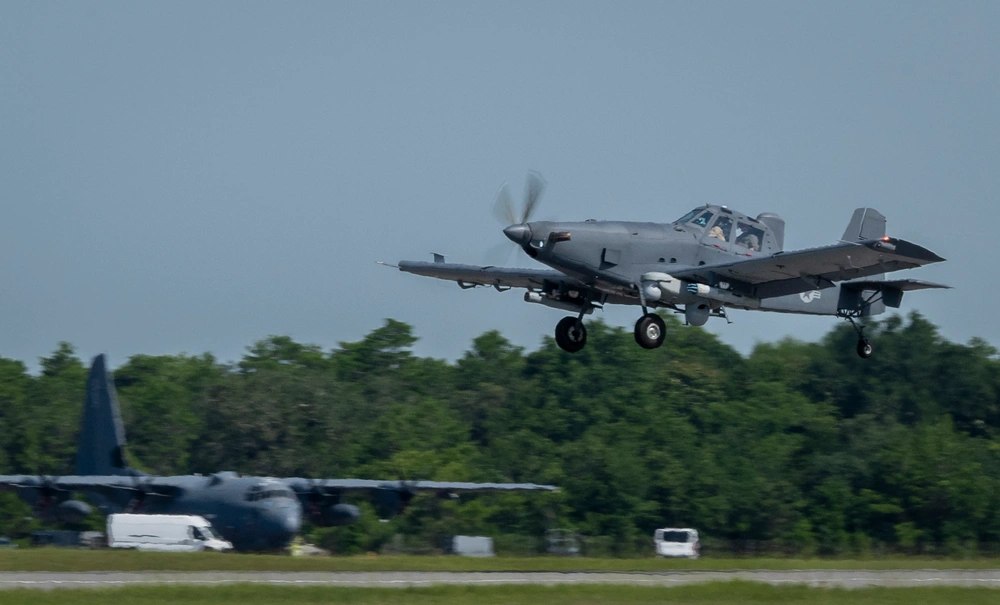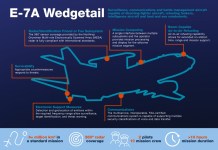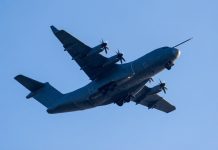The US Air Force Special Operations Command’s (AFSOC) OA-1K light attack aircraft — officially named Skyraider II— is undergoing developmental testing at Eglin Air Force Base.
The 96th Test Wing, in coordination with U.S. Special Operations Command, is responsible for the developmental testing of the new aircraft. The test team’s goals are to evaluate the Skyraider II’s military airworthiness and verify the manufacturer’s performance data accuracy. Lastly, the team will evaluate the aircraft’s effectiveness at its proposed special operations mission, according to information published on DVIDS.
The OA-1K Skyraider II is a single-engine turboprop light attack and reconnaissance aircraft designed by Air Tractor and L3Harris Technologies.
It is a militarized version of the Air Tractor AT-802, a civilian aircraft commonly used for firefighting and agriculture, designed to provide close air support (CAS), precision strike, and intelligence, surveillance, and reconnaissance (ISR) capabilities for special operations forces (SOF).
It is mainly designed for a host of different low-intensity conflict scenarios to take the load off of tactical combat aircraft.
“There was quite a bit that went into this, from making sure we were compliant on the regulatory side, to ensuring we had the proper operations support for the Skyraider II,” said Maj. Stephen Wakefield, 96th TW. This specifically required extra pilot training with the Skyraider II’s civilian variant, the AT-802, to learn to fly the tailwheel aircraft effectively.
The development comes months after the first Skyraider II was delivered to Air Force Special Operations Command (AFSOC) in April this year. At the time, the AFSOC said that the delivery marked “the start of a new era in aircraft modularity.”
It noted that the OA-1K “can adapt capabilities for required mission sets, be it close air support, precision strike, or armed intelligence, surveillance, and reconnaissance. Its flexibility ensures AFSOC can meet the needs set forth by the Secretary of Defense and the President.”
What Is The Skyraider II?
The Skyraider II derives its name from the Douglas A-1 Skyraider, which served during the Korean War and Vietnam War. It was a single-engine, piston-powered attack aircraft designed for CAS, dive bombing, and armed reconnaissance, primarily for the US Navy and Marine Corps, later used by the US Air Force and allied air forces.
It was in 2017 when the need for a specialized, affordable platform to provide close air support (CAS), armed overwatch, and intelligence, surveillance, and reconnaissance (ISR) for SOF in austere environments was highlighted during the Tongo Tongo ambush in Niger, where four US Green Berets were killed due to delayed air support.
In 2020, the AFSOC initiated the ‘Armed Overreach Program’ to acquire a cost-effective, light attack aircraft to support Special Operation Forces (SOF) in low-intensity conflicts, replacing more expensive platforms like tactical jets and bombers for missions in permissive airspace. The Skyraider II is part of this program.
In 2022, the AT-802U (now the Skyraider II) defeated rivals such as the Beechcraft AT-6 Wolverine, Embraer A-29 Super Tucano, and PZL M28B 1R Bryza.
The aircraft was officially designated OA-1K in late 2022. However, in February 2025, it was officially christened ‘Skyraider II’ to honor the legacy of the A-1 Skyraider.

Though the role of the Skyraider II in future conflicts is still being discussed at the highest levels, we know that the aircraft is a two-seat, tail-dragging turboprop aircraft with a focus on low operating costs and versatility.
It is designed for simplicity, ruggedness, and adaptability, making it ideal for operations in remote or austere environments.
Based on the AT-802, the Skyraider II features a robust structure modified with a tandem two-seat cockpit for a pilot and a sensor/weapons systems operator. It includes lightweight composite ballistic armor around the engine and cockpit to protect against ground fire.
It is powered by a single Pratt & Whitney PT6A-67F turboprop engine producing 1,600 horsepower (1,200 kW), driving a five-bladed Hartzell Propeller Titanium Dome. This provides a top speed of 213 knots at 10,000 feet without external armaments.
Like its namesake, the A-1 Skyraider did in the Korean and Vietnam Wars, the OA-1K will support isolated special operations forces in the field with targeted gunfire and airborne eyes and ears.
“The Skyraider II is a cost-effective crewed aircraft that is adaptable across the spectrum of conflict. It is designed to have the ability to support special operations forces as well as the Joint Force through close air support, precision strike, and armed intelligence, surveillance, and reconnaissance,” according to the AFSOC.
The Command describes it as a dynamic aircraft that will allow operators to adjust effects for required missions and create dilemmas for our adversaries across the spectrum of armed conflict.
In comparison to purpose-built aircraft, the OA-1K is intended to offer the capabilities of several aircraft on a platform that is less costly, easier to maintain, and readily adaptable to support new missions.
A Skyraider II can conduct a single sortie with an ISR-focused loadout to provide a special operations team with intelligence about a community where they are scheduled to meet with local officials.
The aircraft can fly up to 200 miles and loiter for up to six hours with a typical combat load, offering significant persistence for ISR and CAS missions.
More importantly, though, it has a short takeoff and landing (STOL). The tailwheel landing gear and large wing area of the Skyraider II enable operations from austere airstrips, enhancing deployment flexibility.
To increase the Skyraider II’s usefulness, AFSOC is looking into ways to integrate standoff weapons and launched effects, like air-launched drones, that can operate beyond the range of sophisticated air defenses. These might make it possible to perform duties like interdiction or convoy escort in contested environments.
The Skyraider II is being marketed as a tough, adaptable platform that can support combat operations when more sophisticated and costly aircraft might not be available or economically sustainable. It perfectly aligns with AFSOC’s requirement for a flexible aircraft in situations where risk is high and logistics are constrained.
The total fleet of 75 turboprop planes will be spread across four AFSOC bases.
“As the test efforts mature, we will be able to determine final syllabus requirements and how many students will be expected to train each year to satisfy operational requirements,” an AFSOC spokesperson said earlier.
The Skyraider II fills a niche for cost-effective, adaptable support for SOF in low-intensity conflicts, reducing wear on high-end assets. Its low operating cost, STOL capability, and modular design make it ideal for austere operations.
AFSOC is optimistic about its potential, with Lt. Gen. Michael Conley stating it offers a “unique capability” that may meet unforeseen national needs.
- Contact the author at sakshi.tiwari9555 (at) gmail.com
- Follow EurAsian Times on Google News




